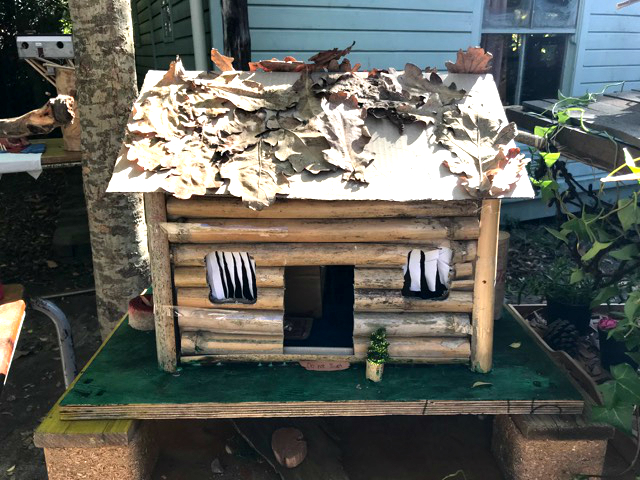During Class 3 the child goes through the 9-year-old transformation, which is a significant step for the child’s growing consciousness and self-awareness. Essentially they are waking up to the fact that they are separate and different to the rest of the world, and no longer a part of the whole. In a sense one could say they are experiencing “the fall from paradise” and now have to find ways to cope with living on the earth. This can be a challenging, confusing and traumatic time as the children experience intense feelings of doubt, fear and self-criticism and consciousness brought on by their growing self-awareness. The Waldorf curriculum helps to meet the children as follows:
Hebrew Scriptures
The stories from the Old Testament form the backbone of the year. These stories provide archetypal images, which help the children through the transformation on a soul level. The laws, guidelines, guidance, and struggles of the Israelites and stories of the characters chosen by God foster inner security during this unsettling period. In these stories the children encounter a higher power that can be relied on. The stories will be told throughout the year, and much of our reading & writing, as well as math lessons, will be taken out of the stories.
Farming and Gardening
The Class 3 child, on becoming aware that they are leaving the world of early childhood, suffers a sense of irretrievable loss. This experience, which is likened to the “expulsion from Paradise,” is addressed on the soul level by our study of the Hebrew Scriptures. On the physical level, just as Adam and Eve were told that they would have to earn their keep “by the sweat of their brows,” the 9 year old seeks a way in which his or her will may be brought in relationship with their new home – the Earth.
With this in mind, we learn how the gardener and the farmer live and work. Through our own “hands-on” work in the school garden, the children learn in an active way to care for and tend to the Earth in order to reap the rewards.
Shelter and House building
Beginning with the biblical archetypes of “man’s first home”, we will see how, once expelled from Paradise, humans had to protect themselves from the elements and create their own sense of space. Our main lesson will take us into the study of world geography, in a sense. In the past how did a particular setting determine the type of houses that people built? We’ll see the Inuit’s’ houses of ice and the lake-dweller’s houses on stilts, houses built of grasses and palm fronds, houses carved out of rock, homes in Kenya and Africa etc.
Measurement
As the Class 3 child becomes more aware of themselves and the physical environment in which they live, a new interest in the practical/natural world emerges. They are now able to apply the mathematical skills learnt in a wide range of everyday situations that require measuring, weighing and solving problems; thus measurement is introduced:
- Time: We learn about the historical ways in which time has been measured: the cycle of the year, the sundial, the hour glass, etc. all the way up to the digital clocks of today.
- Space: Protagoras said, “Man is the measure of all things,” and we see how linear measurement evolved from the proportions of the human being.
- Liquid: We look at various ways to measure liquids with lots of hands on work.
- Weight: Here we see how objects – including our own bodies – relate to earthly gravity.
Mathematics
We continue our work with the times-tables. Now that the children’s own rhythmic-circulatory systems are developing, we will begin to use strong rhythmic repetition a little less, and ask them to recall the tables in a more random-accessed way. They children also continue practicing and developing skills with the four processes.
Language
In Class 3 the children are formally introduced to grammar by looking at naming, doing and describing words. They continue developing their reading skills and start writing in cursive.
Form Drawing
This year, the big step for the class will be working with forms that meet and cross each other, to create a new form out of their intermingling. We will also work with forms within a circle, lemniscate forms and transformations of straight lines into curves, Metamorphosis of forms will be practiced extensively.



